 Oh Paris, beautiful and expensive like so many things that we covet. With the current state of the dollar, eating well at the 1.50 plus exchange rate is not always easy. So here was the challenge I gave to myself as part of enjoying a stay in the City of Lights without breaking the bank. Can I make tasty lunch for four at our apartment for under 15 euro?
Oh Paris, beautiful and expensive like so many things that we covet. With the current state of the dollar, eating well at the 1.50 plus exchange rate is not always easy. So here was the challenge I gave to myself as part of enjoying a stay in the City of Lights without breaking the bank. Can I make tasty lunch for four at our apartment for under 15 euro?
One of the great advantages of renting an apartment in Paris (or any city in Europe right now for that matter) is the ability to buy your own groceries. Today’s post is focused on budgeting out your dollar so you can splurge on some good meals out.
The first rule to keep your costs down at the grocery store is go with the store or house label. Just as in the States the quality of private label food has improved but the price gap is more pronounced in France, often as much as 50%. Remember, you can always buy artisan labels, but you will break this budget.
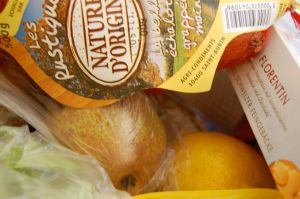
So lets try our luck to put together today’s lunch for four people for under 15 euro with groceries purchased at our local Simply Market (part of the large Auchan group). Prices are similar at the other markets such as Monoprix or Casino.
One thing to keep in mind is that the French grocery stores pay a lot more attention to the quality of food than ours do, it is much more about quality than quantity. You can eat commercial quality grocery food products and have a good quality meal.
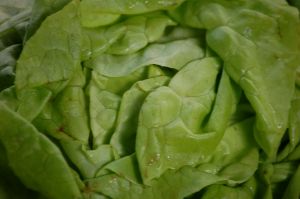 One of the great French bargains (yes that is not an oxymoron) is the head of butter lettuce. Checking in at .60 euro somehow the French lettuce always seems to have better texture and they certainly are a lot bigger than anything you see back in the States. Tomatoes come in at 1.20 for 3 large red decent ones, not heirlooms by any stretch but decent quality.
One of the great French bargains (yes that is not an oxymoron) is the head of butter lettuce. Checking in at .60 euro somehow the French lettuce always seems to have better texture and they certainly are a lot bigger than anything you see back in the States. Tomatoes come in at 1.20 for 3 large red decent ones, not heirlooms by any stretch but decent quality.
The other great bargain (yes 2!) is the baguette. While a commercial baguette from the store might do, take some time and find an artisan baker in your neighborhood. The price gap, say 1.30 euro instead of 1 is worth it. But even the commercial version has a certain familiar quality to it even it might be their version of store baked wonder bread.
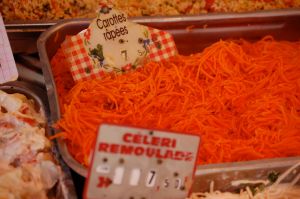
Lunch centered around two salads. The fist consisted of a pre-made salad knows as Carrot Rapees, ridiculously cheap at .90 euro for 500 grams, about 1.1 pounds. The carrots come shredded and dressed in a vinaigrette and ready to serve. If you buy the same items at a traitteur it will cost triple, the Simply version was more than adequate with no off odors and a pleasant taste.
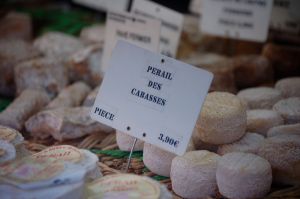 Treat yourself to a good cheese, we chose a Tomme de Savoie, a semi-soft tasty but mild cheese from the Alps. 3.50 euro for about 200 grams. If you want a goat cheese go for it, there are plenty or reasonable chevres to be found in the package cheese aisle, just look for the goat on the label. They are typically soft and easy and under 3 euro.
Treat yourself to a good cheese, we chose a Tomme de Savoie, a semi-soft tasty but mild cheese from the Alps. 3.50 euro for about 200 grams. If you want a goat cheese go for it, there are plenty or reasonable chevres to be found in the package cheese aisle, just look for the goat on the label. They are typically soft and easy and under 3 euro.
The other main course was a beet/lentil/cheese salad. After cutting the Tombe into in small chunks we combined them with vacuum packaged beets that were pre cooked and ready to go, a good deal at 6 for 1.75 euro and lentils.
Yes the lentils came from a can but they quite edible and not over salted, a mere .80 for 800 grams. That is over 1 1/2 pounds of lentils, more than enough for 4.
For the bargain trifecta, grab a liter of Perrier for .70 euro, that same drink will set you back 4.50 at the cafe for 250 cl. So enjoy.
Dessert? 4 fresh pears and 4 packs of excellent local yogurt. 1.75 for the pears and 1.80 for the yogurt. We went for the Activa with meusseli. You can always spend more on yogurt by going artisan and looking for the small jars.
And the final “bargain”, a liter of Perrier for .70 euro, remember, it’s 4.50 at the cafe for a tiny bottle. That is a disparity.
So let’s recap the bill;
.60 lettuce 1.20 tomatoes
3.50 cheese 1.75 beets
.80 lentils 1.75 pears 1.80 yogurts
.70 Perrier (1.0 liter) or .60 flat water
1.30 baguette
And there your are; a bill around 13 euro (about $19) for lunch for 4. That leaves you 2 euros plus for an inexpensive bottle of wine (there were about 5 different ones at the store but they looked pretty scary to be honest) to round it off if you want or perhaps a better dessert.
Or you can break the budget and find a better bottle for under 5 euro (more on that in the next blog). There is just one assumption in this lunch, that there is some oil and vinegar at the apartment. Most of the time there is, if not there goes the wine but you have oil and vinegar for the week.
Next up, wine under 5 euro.
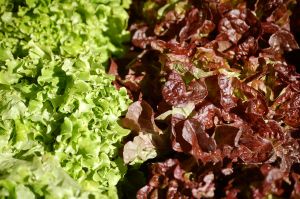
Salads at the open market






 Oh Paris, beautiful and expensive like so many things that we covet. With the current state of the dollar, eating well at the 1.50 plus exchange rate is not always easy. So here was the challenge I gave to myself as part of enjoying a stay in the City of Lights without breaking the bank. Can I make tasty lunch for four at our apartment for under 15 euro?
Oh Paris, beautiful and expensive like so many things that we covet. With the current state of the dollar, eating well at the 1.50 plus exchange rate is not always easy. So here was the challenge I gave to myself as part of enjoying a stay in the City of Lights without breaking the bank. Can I make tasty lunch for four at our apartment for under 15 euro?
 One of the great French bargains (yes that is not an oxymoron) is the head of butter lettuce. Checking in at .60 euro somehow the French lettuce always seems to have better texture and they certainly are a lot bigger than anything you see back in the States. Tomatoes come in at 1.20 for 3 large red decent ones, not heirlooms by any stretch but decent quality.
One of the great French bargains (yes that is not an oxymoron) is the head of butter lettuce. Checking in at .60 euro somehow the French lettuce always seems to have better texture and they certainly are a lot bigger than anything you see back in the States. Tomatoes come in at 1.20 for 3 large red decent ones, not heirlooms by any stretch but decent quality.
 Treat yourself to a good cheese, we chose a Tomme de Savoie, a semi-soft tasty but mild cheese from the Alps. 3.50 euro for about 200 grams. If you want a goat cheese go for it, there are plenty or reasonable chevres to be found in the package cheese aisle, just look for the goat on the label. They are typically soft and easy and under 3 euro.
Treat yourself to a good cheese, we chose a Tomme de Savoie, a semi-soft tasty but mild cheese from the Alps. 3.50 euro for about 200 grams. If you want a goat cheese go for it, there are plenty or reasonable chevres to be found in the package cheese aisle, just look for the goat on the label. They are typically soft and easy and under 3 euro.
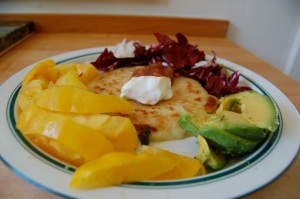 The Pupusa is one of the great street foods of the world and a wonderful export from El Salvador.
The Pupusa is one of the great street foods of the world and a wonderful export from El Salvador.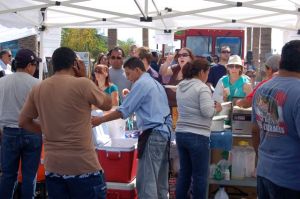 Last weekend the Eat Real festival rocked Oakland’s Jack London square for two days of food democracy. Aided by incredible weather that felt more like you were strolling down a boardwalk in the south of France than the fog of a typical East Bay afternoon it drew crowds that managed to consume two days worth of beer provisions in one. All of this without a hint of rancor or dissonance from a huge crowd enjoying the best of what the Bay Area has to offer, incredible food and relaxed vibes.
Last weekend the Eat Real festival rocked Oakland’s Jack London square for two days of food democracy. Aided by incredible weather that felt more like you were strolling down a boardwalk in the south of France than the fog of a typical East Bay afternoon it drew crowds that managed to consume two days worth of beer provisions in one. All of this without a hint of rancor or dissonance from a huge crowd enjoying the best of what the Bay Area has to offer, incredible food and relaxed vibes.

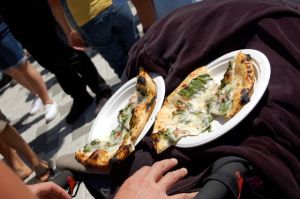 It was a place to see and be seen.
It was a place to see and be seen. This has been a season of garden disappointment for many of us amateurs throughout the bay area. Indeed, many of my tomatoes have gone the way of the Giant’s hitting, first pitch swinging and hitting soft liners to short consisting of a solitary tomato hanging alone on it’s cage while the plant withers around it.
This has been a season of garden disappointment for many of us amateurs throughout the bay area. Indeed, many of my tomatoes have gone the way of the Giant’s hitting, first pitch swinging and hitting soft liners to short consisting of a solitary tomato hanging alone on it’s cage while the plant withers around it. garden that made me want to tear mine out and start over or maybe give up on hot weather plants entirely. Raised bed after bed of beautifully staked tomatoes, basil so full it looked like lavendar, squash the size of clubs….One of the best looking vegetable gardens I have ever seen, all contracted out to local restaurants with the $$ going to charity.
garden that made me want to tear mine out and start over or maybe give up on hot weather plants entirely. Raised bed after bed of beautifully staked tomatoes, basil so full it looked like lavendar, squash the size of clubs….One of the best looking vegetable gardens I have ever seen, all contracted out to local restaurants with the $$ going to charity.
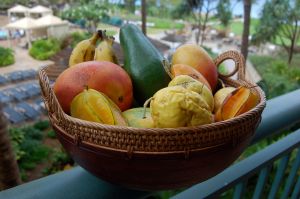 The road on what fish to buy and where and when remains thoroughly and amazingly full of twists and turns. Even buying what you think is a local product is often confusing and a labeling nightmare.
The road on what fish to buy and where and when remains thoroughly and amazingly full of twists and turns. Even buying what you think is a local product is often confusing and a labeling nightmare.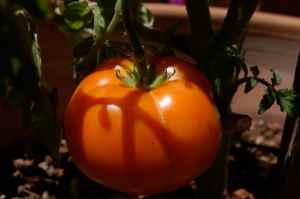
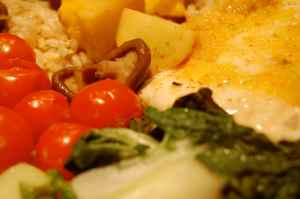
Recent Comments